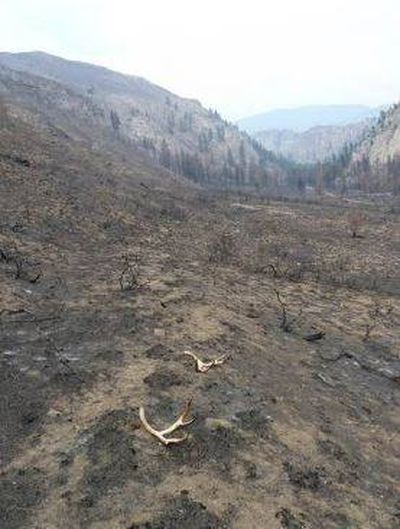Summer wildfires will have effect on hunters

Wildfires burned more than 250,000 acres this summer in north-central Washington – the largest fire area recorded in the state – changing the landscape for hunters.
Big-game animals displaced by fires are likely to move into unburned areas of Okanogan County, district wildlife biologist Scott Fitkin said.
“Fires typically don’t directly kill a significant percentage of larger mammals or birds,” he said. “But fires can affect wildlife distribution. Where fires burned intensely, wildlife will likely be scarce, but adjacent unburned areas could actually see an influx of animals. If substantial fall rain and green-up occurs, some animals could be back into the fire perimeter, at least temporarily.”
Unburned areas also are likely to attract more hunting pressure.
Most of the affected lands are in the Methow Valley. The most seriously affected Game Management Units in descending order of impact were 239, 242 and 224. Smaller portions of GMUs 218 and 231 also burned.
Flash floods and mudslides from intense thunderstorms that followed the fires caused widespread damage to primary and secondary roads, particularly in GMUs 224, 239 and 242.
Emergency changes to this year’s hunting regulations are still being considered. More antlerless deer permits will be allotted to decrease the herd by about 7 percent to help prevent starvation. The state plans to award permits to youth, senior, disabled, second deer and master hunter permits drawn from this year’s applicant pool for relevant GMUs.
Damage-related permits will also be used to address anticipated agricultural nuisance issues.